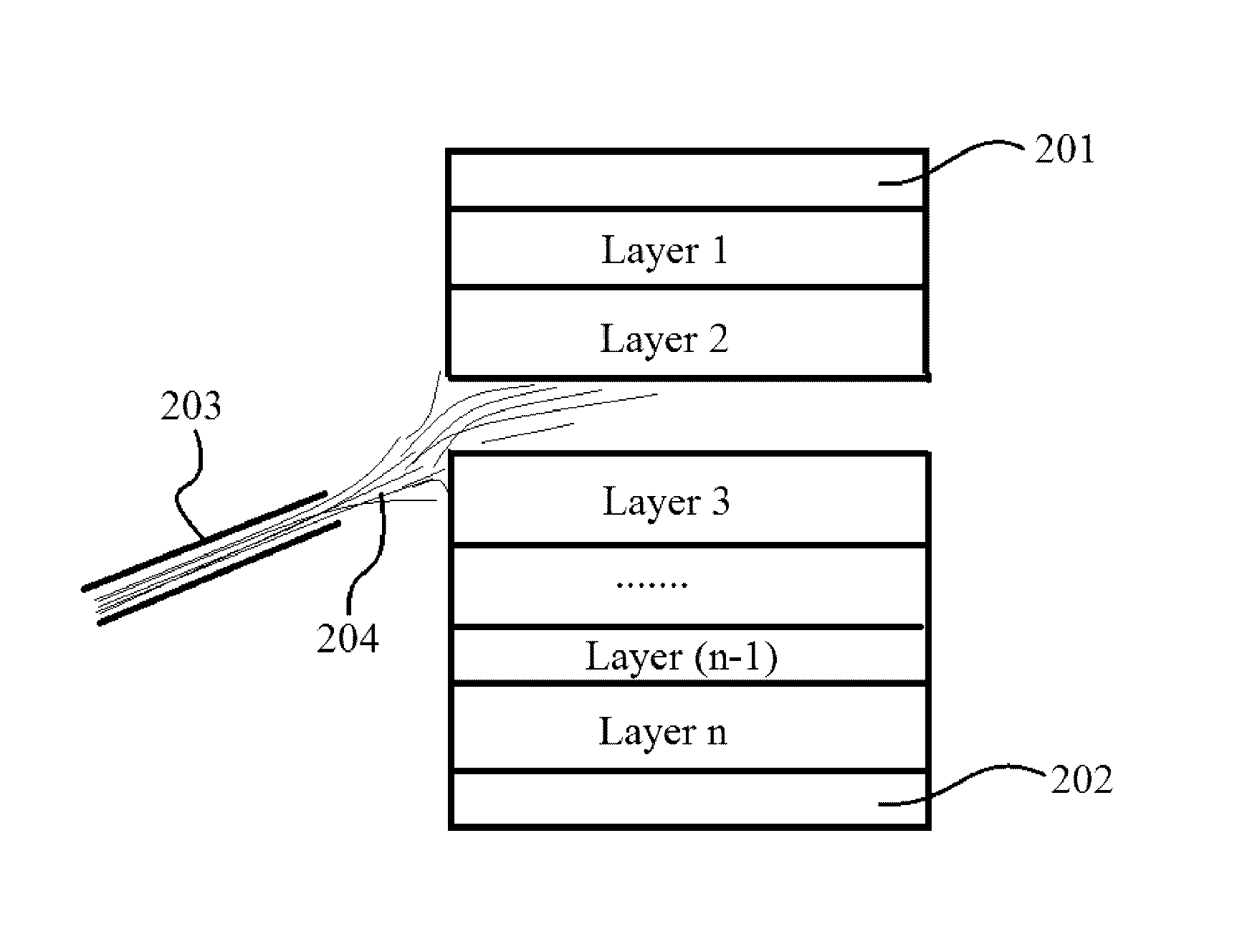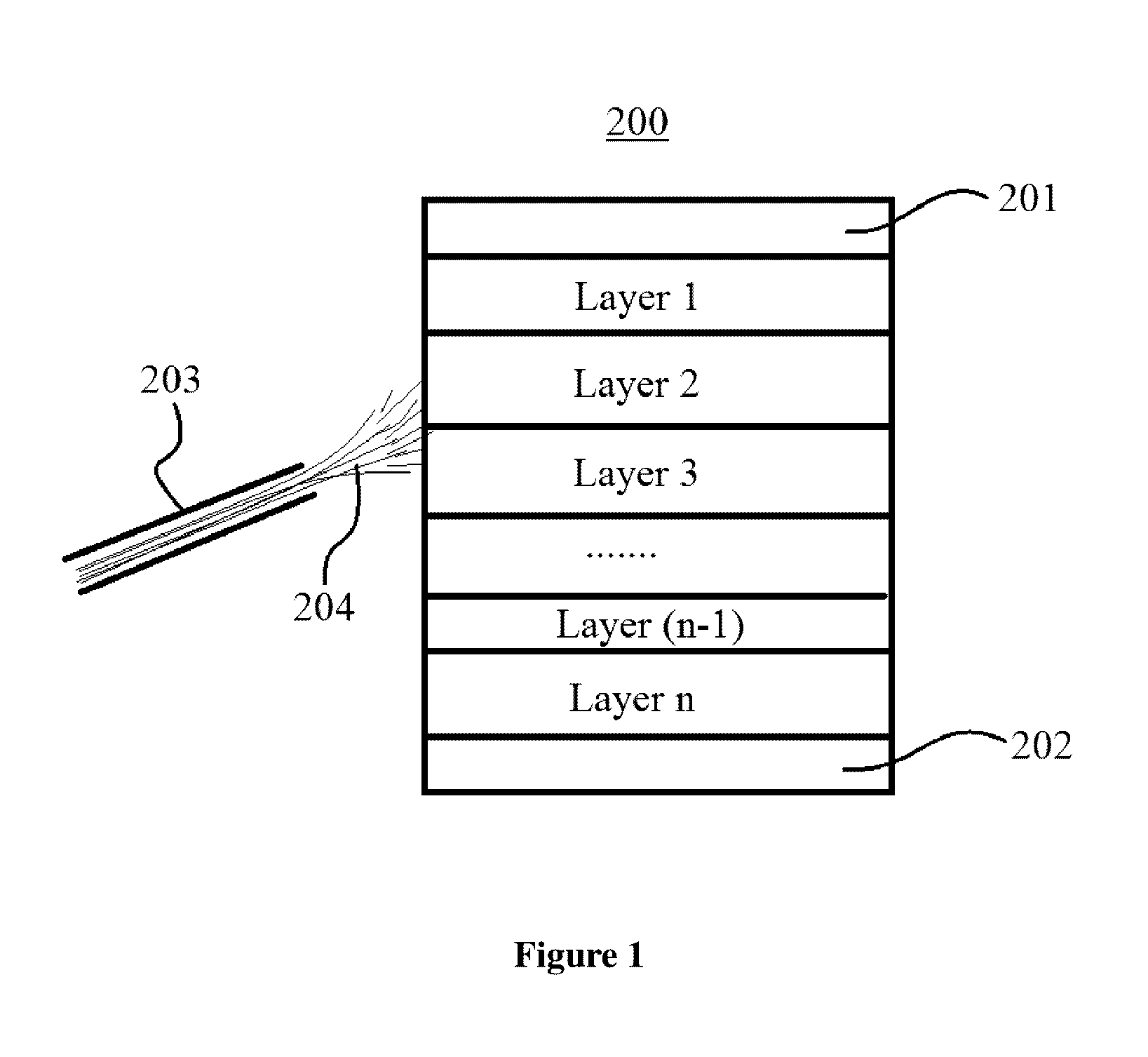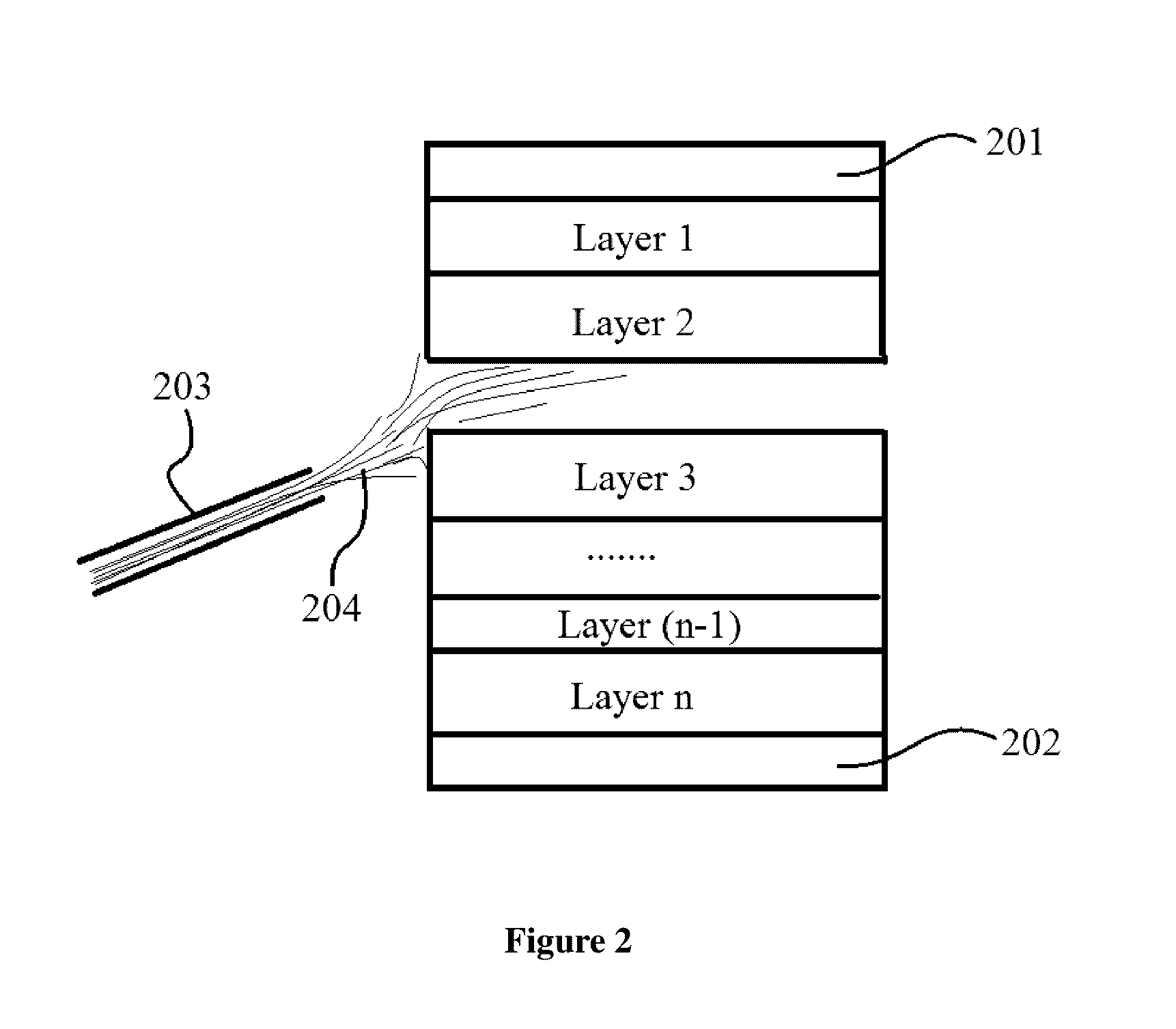Method of Separating a Carrier-Workpiece Bonded Stack
a carrierworkpiece and stack technology, applied in the field of carrierworkpiece bonding stack separation, can solve the problems of increasing capacitance, requiring thicker transmission lines, and large ic footprin
- Summary
- Abstract
- Description
- Claims
- Application Information
AI Technical Summary
Benefits of technology
Problems solved by technology
Method used
Image
Examples
example 1
[0078]A silicon device wafer (i.e. workpiece 60 or wafer 50) was placed onto a vacuum chuck in a WS-400 spin coater (available from Laurell Technologies). Approximately 2 ml of Z-BOND 601 Silicone composition (available from Micro Materials Inc. (MMI), 10080 Willow Creek Road, San Diego, Calif. 92131) was needle dispensed onto the center of the wafer. The wafer was then rotated at 500 rpm for 10 seconds, 1000 rpm for 5 seconds, 2000 rpm for 10 seconds, and 600 rpm for 5 seconds, and the rotation was then stopped. The Z-BOND 601 formed a uniform wet layer on the device wafer after the spin coating. The thickness of the wet Z-BOND 601 layer (i.e. adhesive layer 40) is about 15 μm.
example 2
Carrier Wafer Coating and Formation of Support 10
[0079]A silicon dummy wafer was used as the carrier wafer, and it was placed onto a vacuum chuck in a WS-400 spin coater. Approximately 2 ml of Z-COAT 150 polyethersulfone composition (available from Micro Materials Inc., 10080 Willow Creek Road, San Diego, Calif. 92131) was needle dispensed onto center of the carrier wafer. Then wafer was rotated at 700 rpm for 5 seconds, 1500 rpm for 10 seconds, and 500 rpm for 5 seconds, before the rotation was stopped. The Z-COAT 150 formed a uniform wet layer on the carrier wafer after the spin coating. The thickness of the wet Z-COAT 150 layer right after the spin coating is approximately 12 μm.
[0080]The carrier with wet Z-COAT 150 layer was then placed on a hot plate of 80° C. for 10 minutes. The Z-COAT 150 started to form a dry layer on the carrier wafer during the heating. Carrier was then moved to a second hot plate of 200° C. for 7 minutes, then to third hot plate of 350° C. for 10 minutes,...
example 3
Wafer Bonding and Thermal Stability
[0081]The wafer bonder used in this example is Z-BT200 bonder commercially available from Micro Materials Inc., 10080 Willow Creek Road, San Diego, Calif. 92131. Support 10 from Example 2 in which the supporting surface 21 and the isolation film 30 are bonded together, and wafer 50 from Example 1 in which its engaging surface 51 is bonded to the adhesive layer 40, are then pressed together, so that the second side 32 of the isolation film 30 is in contact with the first side 41 of the adhesive layer 40. The bonding was conducted at a temperature of 120° C. with 1 kg force applied for 4 minutes in vacuum of 0.1 millibars to form a bonded wafer stack 100. The wafer stack was visually inspected and no voids were observed. Thermal stability was evaluated by placing a bonded wafer stack on to a hot plate set to 350° C., after which the wafer stack were visually inspected, and no blister, crack, rupture, color change or other visual defects on the carrie...
PUM
 Login to View More
Login to View More Abstract
Description
Claims
Application Information
 Login to View More
Login to View More - R&D
- Intellectual Property
- Life Sciences
- Materials
- Tech Scout
- Unparalleled Data Quality
- Higher Quality Content
- 60% Fewer Hallucinations
Browse by: Latest US Patents, China's latest patents, Technical Efficacy Thesaurus, Application Domain, Technology Topic, Popular Technical Reports.
© 2025 PatSnap. All rights reserved.Legal|Privacy policy|Modern Slavery Act Transparency Statement|Sitemap|About US| Contact US: help@patsnap.com



